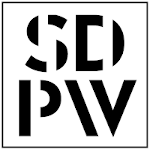Wykaz obszarów badawczych:
| # | Research Area | Dziedzina naukowa |
|---|---|---|
| 1 |
Design, modeling and research of semiconductor devices and VLSI integrated circuits for new nanometer technologies.
A particularly current topic is the innovative VESTIC (Vertical-Slit Transistor based Integrated Circuit) technology, an alternative to CMOS technologies (such as FinFET, FD-SOI), including components designed for this technology, especially the new junctionless double-gate transistor VeSFET (Vertical-Slit Field-Effect Transistor). For various applications, their following attractive properties are most important:
- unique geometry enabling the creation of a fully regular matrix with evenly spaced electrical contacts,
- integration with other types of transistors while maintaining the regularity of the circuit topography,
- the possibility of making interconnections on two levels above and below the silicon layer containing transistors and 3D integration thanks to vertical contact columns that are also vias through the silicon layer,
- reduction of the area occupied by transistors and insulation areas (reduction of the characteristic dimension also below 10 nm), with a reduced cost of lithography operations,
- shortening of interconnections and reducing signal delays in them,
- twin, electrically symmetrical gates allowing their independent biasing (Independent Gate Configuration): control of the threshold voltage value in the widest range, easy implementation of OR and AND functionality of a single transistor, reconfiguration of the system,
- low power consumption (including extremely low leakage current of the turned off transistor) important especially in mobile devices and the Internet of Things IoT,
- radiation hardness, easy integration of the reading system with detectors,
- effective heat dissipation.
The use of the above possibilities will allow for the construction of new competitive digital, analog and mixed systems, including, for example, reconfigurable systems, memories, sensor matrices.
|
Automation, Electronics, Electrical Engineering and Space Technologies |
